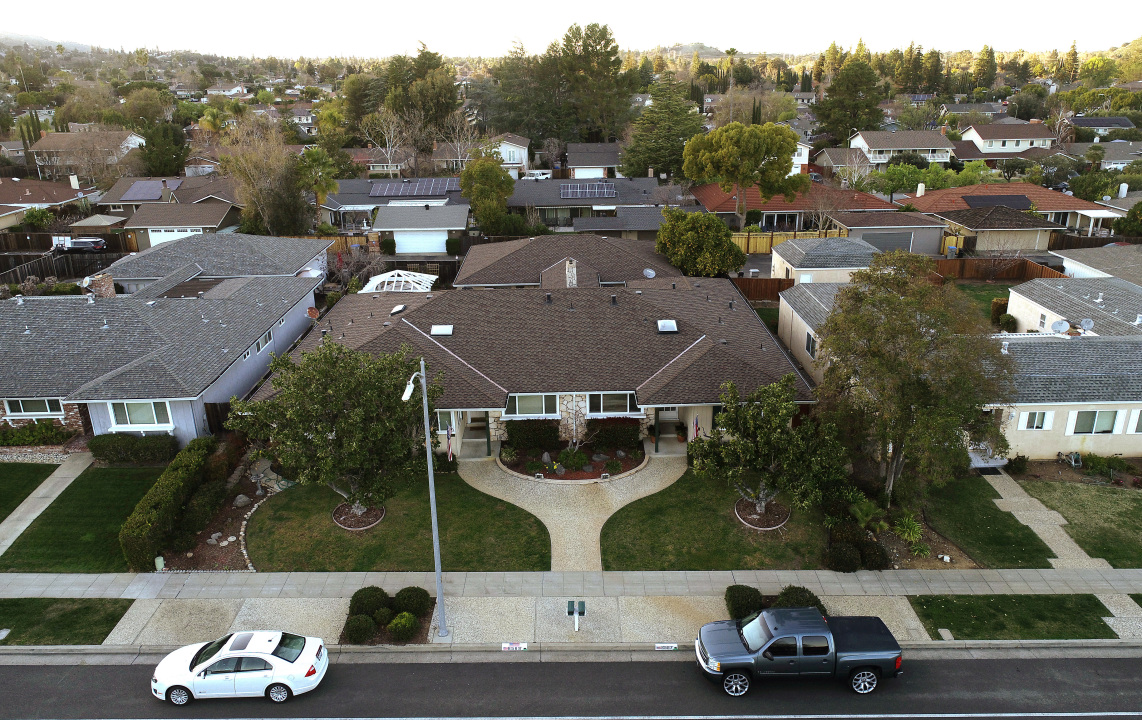“We need to figure out how to build more housing,” said Mathew Reed, policy manager at Silicon Valley at Home. “That’s just a reality check.” Without substantial change, the region’s lack of affordable housing will choke its position as a center of innovation and wealth. Right now, San Jose’s single family zoning excludes half its residents from 94% of its land, making it hard for young families and essential workers to stay. Opportunity housing is one tool that can help. Reed said many city leaders will at least consider eliminating single-family restrictions to meet housing goals. “I do expect it to spread,” he said.
BY: Louis Hansen┃San Jose Mercury News
PUBLISHED: March 1, 2021 at 7:00 am
A small, city-by-city planning revolution is underway in the Bay Area, potentially transforming residential neighborhoods across the region.
More than 80 percent of residential property in the Bay Area is zoned exclusively for single-family homes, but recent efforts by leaders in Berkeley, San Jose and other cities are challenging restrictions that prevent small apartments in suburban subdivisions and on many city blocks.
The growing movement is startling, given a statewide approach to the problem failed last year. Now “it feels a little bit of an arms race” among cities to reform housing policy, said UC Berkeley housing researcher David Garcia.
Without substantial change, experts warn, the region’s lack of affordable housing will choke its position as a center of innovation and wealth. Just one-quarter of Bay Area families can afford to buy a home for the region’s median price, about $1.1 million in December, according to the California Association of Realtors.
Adoption of the policies is far from guaranteed. Despite recent votes in city council chambers, any proposals will likely endure multiple public hearings and votes, taking months or more than a year for final decisions. Homeowners want to preserve their neighborhoods, while housing advocates want more development to address a chronic shortage of affordable homes and apartments.
“We need to figure out how to build more housing,” said Mathew Reed, policy manager at Silicon Valley at Home. “That’s just a reality check.”
Single-family zoning, a form of exclusionary zoning, traces its roots in the U.S. to Berkeley in 1916, when city leaders sought to segregate white homeowners from apartment complexes rented by minority residents. It’s become the default policy in cities and suburbs across the country.
In 2018, Minneapolis became the first city to eliminate single-family zoning, allowing the development of small apartments of up to three units in residential neighborhoods. The city of Portland followed months later, allowing up to four-unit buildings.
Similar proposals in California, including efforts in Sacramento and San Diego, are largely in the planning stage.
A key incentive driving recent reform efforts is a January 2023 deadline for cities to submit updated housing plans to the state. The mandated revisions must accommodate more homes and apartments — either by increasing density or land for development — to meet new state housing requirements.
California has set a target of 441,000 permits for new homes and apartments in the Bay Area by 2031, more than double the allocation from the previous 8-year Regional Housing Needs Allocation cycle. Reed said many city leaders will at least consider eliminating single-family restrictions to meet these goals. “I do expect it to spread,” he said.

California lawmakers a year ago rejected a sweeping reform proposed by San Francisco Sen. Scott Wiener in SB 50 — dense housing near transit, reduced local control over development, and reopening single-family neighborhoods to multiplexes.
Despite the defeat, pro-housing groups thought they had a winning issue. A poll commissioned for California YIMBY (yes-in-my-backyard) in 2019 found more than 6 in 10 voters in the state supported more housing in their communities. At least 3 in 4 renters wanted more homes and apartments, and even a slim majority of homeowners agreed. Pro-housing candidates won city council seats in several Peninsula cities in 2020, according to Aaron Eckhouse of California YIMBY.
The South San Francisco City Council last week approved plans to consider eliminating single-family zoning. Other cities, including Redwood City and Oakland, have started to look more favorably on residential development and possible reform, Eckhouse said. “It’s still percolating.”
Pro-housing activists have won majorities on a few city councils, including Berkeley. Soon after new members were seated, the Berkeley City Council on Wednesday voted to eliminate single-family zoning by the end of 2022.
“People are realizing how small a group of people were active in preventing homes from being built,” said Matt Lewis, a Berkeley activist and California YIMBY spokesman. “It’s definitely the case in Berkeley, definitely the case in Sacramento, definitely the case in San Jose.”
Any policy shift in San Jose will likely take 18 months, Reed said. A city taskforce has suggested allowing fourplexes throughout San Jose neighborhoods, expanding an initial plan to allow small apartment developments only near transit corridors.
The plan for “opportunity housing” would expand development options in a city where 94 percent of residential properties are reserved for single-family homes. The City Council is expected to vote in June on whether to start the process to adopt citywide rezoning.
But the reform efforts are not without pushback.
Former San Jose City Councilman Pierluigi Oliverio has been organizing resistance to the plan. Oliverio, now a city planning commissioner, said the elimination of single-family zoning would break a compact with several communities. He fears developers will outbid families for single-family homes, tear down houses and replace them with as many as six rental units.
Oliverio argues that San Jose already has a plan to add dense housing downtown and near transit, as well as planned urban villages that have been slow to develop. Besides, he said, San Jose has traditionally built more housing than neighboring cities, diminishing its tax base. “It’s completely unnecessary,” he said.
The results have been mixed in other cities. For example, developers have submitted just a few dozen proposals under the new Minneapolis city ordinance, Reed said.
Patrick Condon, a professor of urban planning at the University of British Columbia in Vancouver, has studied his city’s embrace of a series of housing and zoning reforms in the last 15 years. Vancouver recently allowed property owners to divide lots and build multiplexes on properties once reserved for single-family homes.
Yet Vancouver remains one of the most expensive and unaffordable cities to buy a home. “Despite our best efforts,” said Condon, “it hasn’t worked.”
Condon doesn’t believe simply allowing more density in neighborhoods will bring down prices. It will also take innovation and involvement and oversight from local governments.
“There’s no way,” he said, “for the so-called free market to solve this problem.”
